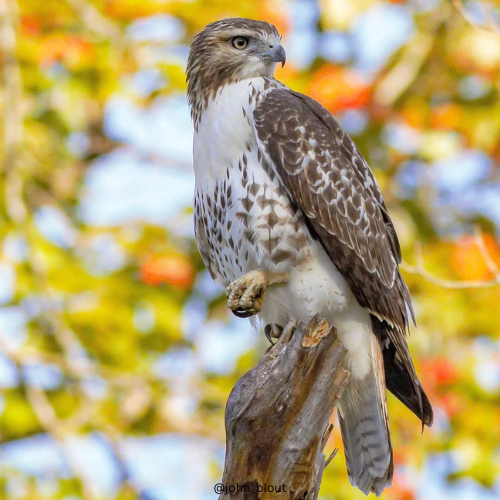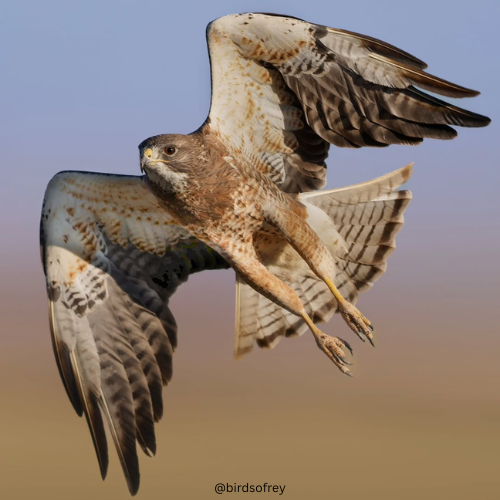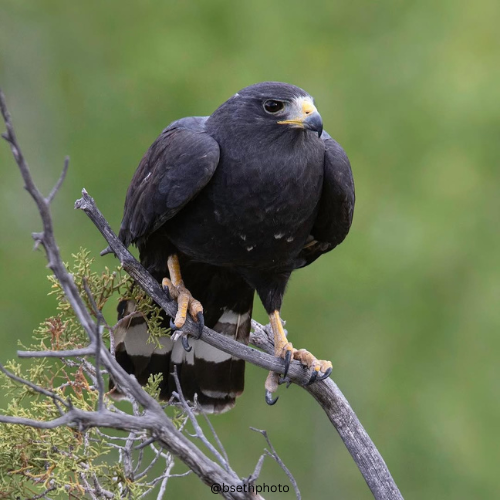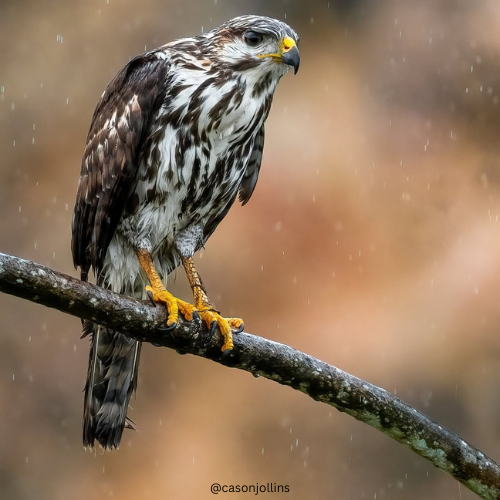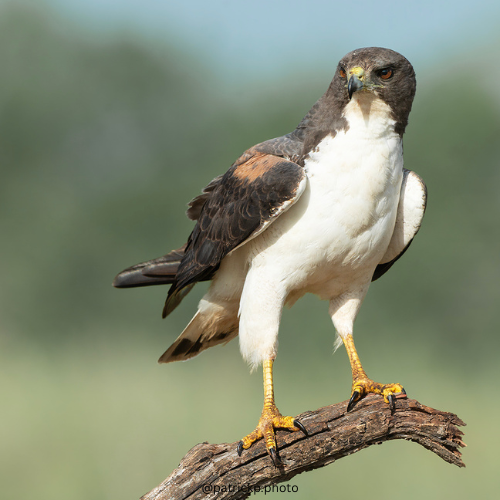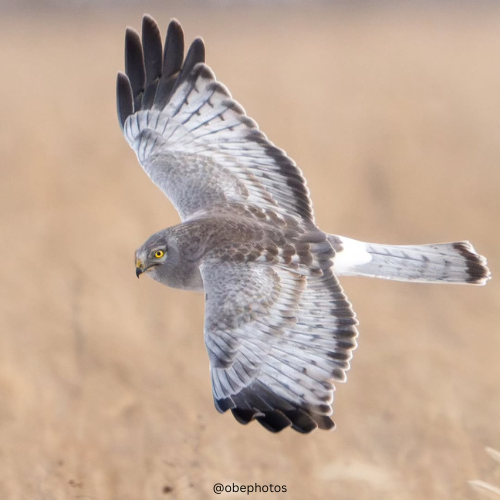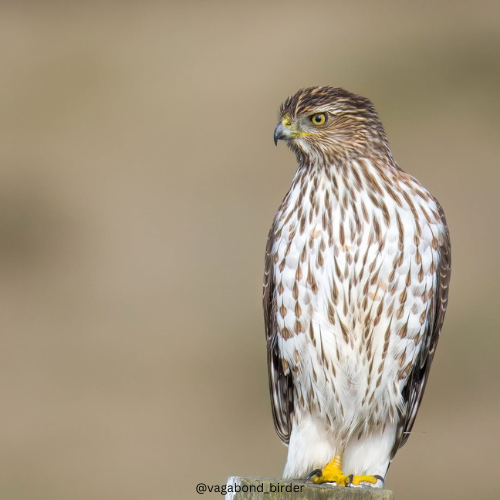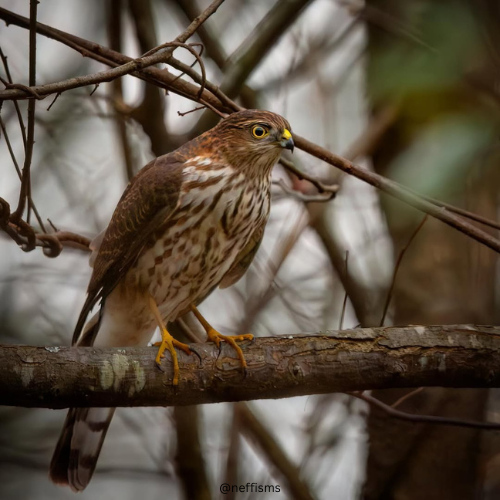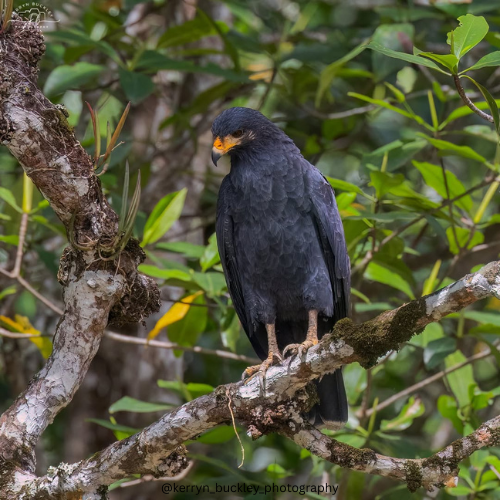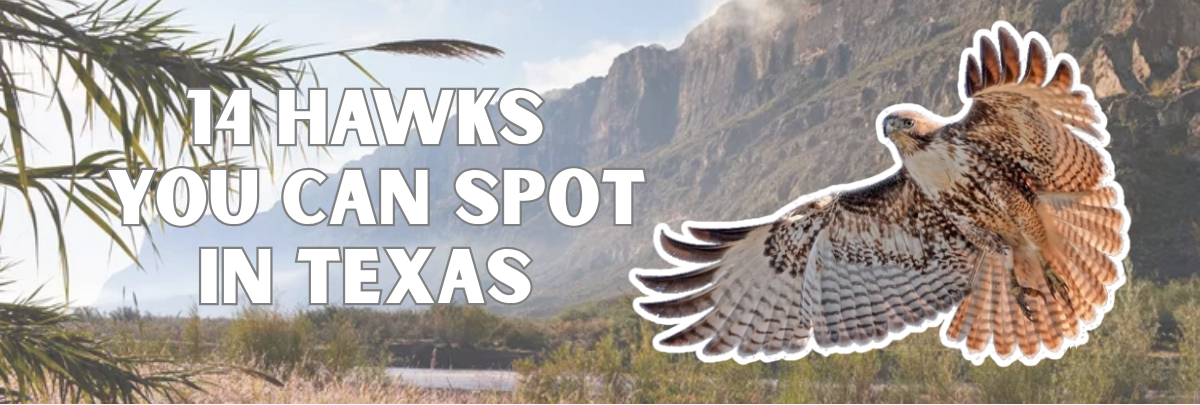
By Avian Feathers Team
Published June 2025
Everything’s bigger in Texas, including the skies.
And when you look up, there’s a good chance you’ll see a hawk soaring overhead.
From dense forests and deserts to wide-open ranch land, Texas is home to a variety of hawks. Some live here year-round. Others visit for part of the year. All are worth keeping an eye out for.
Here are 14 hawks you can spot in the Lone Star State.
1. Red-tailed Hawk
This is the most common hawk in Texas. You’ll see it perched on fence posts or soaring in wide circles above open fields. Its red tail gives it away, especially when the sun shines through. These hawks are bold, powerful and easy to spot almost anywhere.
Size
Length: 18–26 inches.
Wingspan: 43–55 inches.
Weight: 1.5–3.5 pounds.
Scientific Name: Buteo jamaicensis
2. Swainson’s Hawk
Swainson’s Hawks are long-distance travelers. They spend summers in Texas and fly all the way to South America for winter. You’ll see them in open fields, perched on telephone poles or gliding with long, pointed wings. They feed mostly on insects like grasshoppers during the summer.
Size
Length: 18–22 inches.
Wingspan: 46–54 inches.
Weight: 1.5–3 pounds.
Scientific Name: Buteo swainsoni
3. Broad-winged Hawk
These smaller hawks are best known for their massive fall migrations. They gather in huge flocks called kettles and spiral high into the sky. In Texas, they pass through during spring and fall. Their high-pitched whistle is one way to know they’re near.
Size
Length: 13–17 inches.
Wingspan: 32–39 inches.
Weight: 9–20 ounces.
Scientific Name: Buteo platypterus
4. Ferruginous Hawk
This is the largest hawk in North America. It has a pale belly and rust-colored legs, which is how it got its name. Ferruginous Hawks prefer wide-open grasslands and deserts. In Texas, they’re mostly seen in the western and northern parts of the state.
Size
Length: 20–27 inches.
Wingspan: 48–60 inches.
Weight: 2–5 pounds.
Scientific Name: Buteo regalis
5. Rough-legged Hawk
This hawk visits Texas in the winter after breeding in the Arctic. It gets its name from the feathers that cover its legs down to the feet. Rough-legged Hawks hover in place when hunting and love open, windy fields. Look for the bold black patches near their wrists when they fly.
Size
Length: 18–20 inches.
Wingspan: 52–54 inches.
Weight: 1.5–3 pounds.
Scientific Name: Buteo lagopus
6. Red-shouldered Hawk
With rich reddish-orange coloring and black-and-white wings, Red-shouldered Hawks are some of the most striking hawks in Texas. They live in wooded areas and near rivers. Their call sounds like a loud, repeated “kee-rah.” They’re common in the eastern half of the state.
Size
Length: 15–19 inches.
Wingspan: 37–42 inches.
Weight: 1–2 pounds.
Scientific Name: Buteo lineatus
7. Harris’s Hawk
These desert-loving hawks are known for hunting in family groups. That’s pretty rare in the bird world. Harris’s Hawks have dark bodies, chestnut-colored shoulders and white-tipped tails. They’re most common in far south Texas and are a favorite among falconers.
Size
Length: 18–24 inches.
Wingspan: 40–47 inches.
Weight: 1.5–3 pounds.
Scientific Name: Parabuteo unicinctus
8. Zone-tailed Hawk
Zone-tailed Hawks look a lot like Turkey Vultures at first glance. This helps them sneak up on prey. They have blackish feathers with a bold white band near the end of the tail. In Texas, they’re seen mostly in the west and southwest during spring and summer.
Size
Length: 18–22 inches.
Wingspan: 43–55 inches.
Weight: 1.5–2 pounds.
Scientific Name: Buteo albonotatus
9. Gray Hawk
These graceful, soft-gray hawks are mainly found in far south Texas. They live near rivers and are especially fond of cottonwood trees. Their call is a high, whistled “kleeer.” Gray Hawks are rare in the U.S., but south Texas is one of the few places you can see them.
Size
Length: 15–19 inches.
Wingspan: 30–35 inches.
Weight: 14–17 ounces.
Scientific Name: Buteo plagiatus
10. White-tailed Hawk
This hawk is found mostly in coastal south Texas. It has a striking white belly and tail with a dark band near the tip. White-tailed Hawks prefer open prairies and brushlands. They often hover while hunting, a behavior more common in falcons.
Size
Length: 17–24 inches.
Wingspan: 46–56 inches.
Weight: 1.5–3 pounds.
Scientific Name: Geranoaetus albicaudatus
11. Northern Harrier
Northern Harriers are easy to recognize by the white patch on their rump and the way they glide low over fields. They have owl-like faces and use both sight and sound to hunt. In Texas, they’re common in open areas during fall and winter. Males are gray while females are brown.
Size
Length: 16–20 inches.
Wingspan: 38–48 inches.
Weight: 10–26 ounces.
Scientific Name: Circus hudsonius
12. Cooper’s Hawk
Cooper’s Hawks are quick and agile. They’re often seen darting through trees or ambushing backyard birds. They have blue-gray backs, red eyes and long tails. These hawks are year-round residents across most of Texas.
Size
Length: 13–20 inches.
Wingspan: 24–36 inches.
Weight: 8–24 ounces.
Scientific Name: Accipiter cooperii
13. Sharp-shinned Hawk
Sharp-shinned Hawks are smaller but just as fast as Cooper’s Hawks. They also chase birds through forests and around feeders. They’re more common in Texas during the colder months. These hawks have short wings and long tails that help them fly with precision.
Size
Length: 9–13 inches.
Wingspan: 17–27 inches.
Weight: 3–8 ounces.
Scientific Name: Accipiter striatus
14. Common Black Hawk
This hawk is rare in Texas but breeds in a few spots in the far southwest. It prefers rivers and streams with tall trees. Common Black Hawks are dark overall with broad wings and a bold white band on the tail. Spotting one is a special treat for any Texas birder.
Size
Length: 17–21 inches.
Wingspan: 46–53 inches.
Weight: 1.5–2.5 pounds.
Scientific Name: Buteogallus anthracinus
From the widespread Red-tailed Hawk soaring over open fields to the agile Cooper’s Hawk darting through trees, Texas truly offers a spectacular showcase of raptors. Whether you’re witnessing the unique group hunting of a Harris’s Hawk or the incredible migration of Broad-winged Hawks, the sheer variety and power of these birds are a testament to the Lone Star State’s vast and diverse landscapes. They remind us that big skies bring big opportunities for birdwatchers, offering thrilling glimpses into the lives of these magnificent hunters.
Where to Spot Hawks in Texas
Texas is one of the best places in the country to spot hawks. With its open skies, vast grasslands, and desert edges, it offers all kinds of habitats for these powerful birds. Whether you’re watching migration from a hilltop or scanning a fencepost on a backroad, there’s always a chance to see a hawk in action.
Here are some of the best spots in Texas for hawk watching:
Hawk Hill at Hazel Bazemore Park – A top migration lookout in South Texas. Watch kettles of Broad-winged and Swainson’s Hawks swirl overhead in fall.
Davis Mountains State Park – Great for spotting soaring Red-tailed Hawks, Zone-tailed Hawks, and the occasional Golden Eagle.
Balcones Canyonlands National Wildlife Refuge – Offers excellent views of forest-dwelling hawks like Red-shouldered and Cooper’s Hawks.
Laguna Atascosa National Wildlife Refuge – A rich, coastal habitat where you can see White-tailed Hawks and Northern Harriers gliding low over the brush.
Big Bend National Park – Remote cliffs and desert skies make this a top spot for Harris’s Hawks and Gray Hawks.
Brazos Bend State Park – A reliable area for spotting Swainson’s Hawks and Red-tailed Hawks in wide-open hunting grounds.
Hill Country river valleys – Cooper’s and Sharp-shinned Hawks dart between trees near creeks and wooded ridges.
Amistad National Recreation Area – Known for open desert views and the chance to see rarer species like Zone-tailed or Ferruginous Hawks.
Texas is one of the best places in the U.S. to watch hawks. Which ones have you seen soaring overhead?
Let us know your favorite hawk sighting or the one still on your list.

